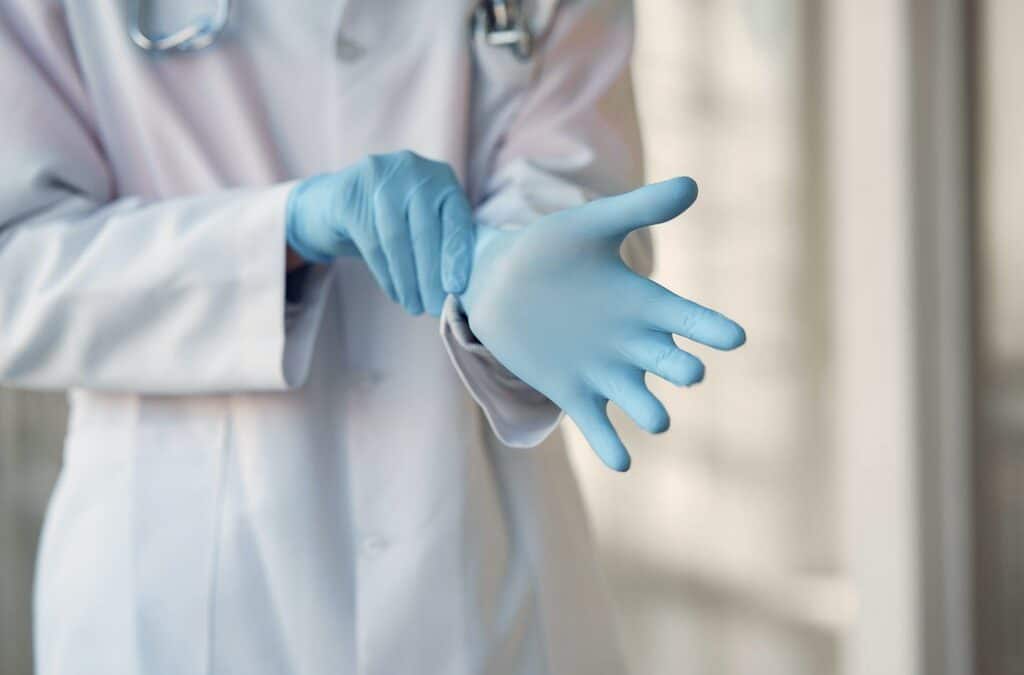No matter what kind of medical facility you are in charge of, there are healthcare cleaning standards that need to be adhered to, as well as supplies and equipment that must be used and maintained. Many of these cleaning standards are set by organizations such as the CDC, OSHA, AAAHC, and AORN. It is important that your facility always is up to standard and meets these regulations at all times. To do that, it helps to follow a checklist of healthcare cleaning supplies and equipment.
Or, leave the heavy lifting to our team at 360clean. Our commercial cleaning company provides health-focused cleaning services and programs for all types of healthcare facilities throughout the United States. For a free estimate on healthcare facility cleaning programs, contact us today!
Managing Cleaning Equipment and Supplies
Healthcare-associated infections (HIA) affect millions of patients in healthcare settings each year. To limit infections, it’s crucial that proper cleaning supplies are readily available and equipment stays maintained. Here’s how to get started.
External Cleaning Companies
The CDC gives guidelines for the management, procurement, upkeep, and maintenance of cleaning supplies used in facilities. If an external company manages a facility’s cleaning program, service contracts should include:
- The approved cleaning supplies and products that will be used
- The approved maintenance schedules
- The approved equipment specifications
The external company must always use best practices for supply and equipment management.
Internal Cleaning Programs
Some best practices and checklists must be followed for cleaning programs that are managed in-house as well. These include:
- Monthly inventories and inspections of equipment and supplies
- A central store for large facilities that receive inventory reports
- The results of routine inspections and maintenance activities
- A master list of the equipment and supplies and their required quantities
The required quantities should be developed at least on an annual basis by the cleaning program manager or hygiene committee (or a similar party). Whenever routine inspections are done, the results should be used to determine how much should be ordered in the future.
It’s extremely important for regular inventories to be taken as part of these inspections, too. Frequently taking stock of what is available will help to:
- Anticipate supply needs
- Prevent stock-outs
- Make sure additional materials are available for contingencies, like outbreaks
The CDC also recommends that a specific protocol for distribution be maintained. In other words, structured distribution should be carried out from the cleaning services area throughout the rest of the facility regularly.
Policies for Cleaning Supplies and Equipment
Written cleaning policies and procedure records need to include several elements to be effective, such as:
- Monitoring methods, staff responsible, and frequency
- Cleaning schedules for all patient care areas
- Lists of required PPE
- Regulations for hand hygiene
- Training requirements
- Well-defined lines of accountability
- Lists of approved cleaning products
In addition, you should also keep contingency plans and cleaning procedures for outbreak management. Consulting national and/or governmental policies are recommended to keep standards incorporated into healthcare cleaning procedures.
Make sure cleaning schedules include key details on requirements of all kinds for cleaning in healthcare settings. These details have to include the frequency of cleanings, the staff responsible for those cleanings, and the process (including methods and products) that should be used.
Cleaning Checklists for Healthcare Cleaning Programs
Developing materials to assist with the implementation of standard operating procedures can make cleaning efficient and thorough. Cleaning checklists are tools that can help make sure that every step of various procedures is completed. They can also help guide the daily workflow of cleaning personnel.
These logs should specify the locations (like rooms or wards) and the cleaning session (terminal cleaning or routine cleaning, for example), and include the signature of the cleaning staff along with the date.
Checklists are also very important because they serve as proof that cleaning is being done according to facility policy. When checklists are available to guide the daily workflow for cleaning staff, they can also ultimately become official records. Keeping the checklists in the proper areas where they can be easily accessed is important, and the cleaning program manager should review them from time to time.
Keep Your Facility at Its Best with 360clean
Structured cleaning programs identify and address deficiencies and make sure that cleaning is always done according to best practices. At 360clean, we clean more than one million square feet of healthcare facility space every night, and our teams abide by industry best practices for cleaning in the healthcare niche.
Contact us today to learn more about what we can do to help protect your facility!

